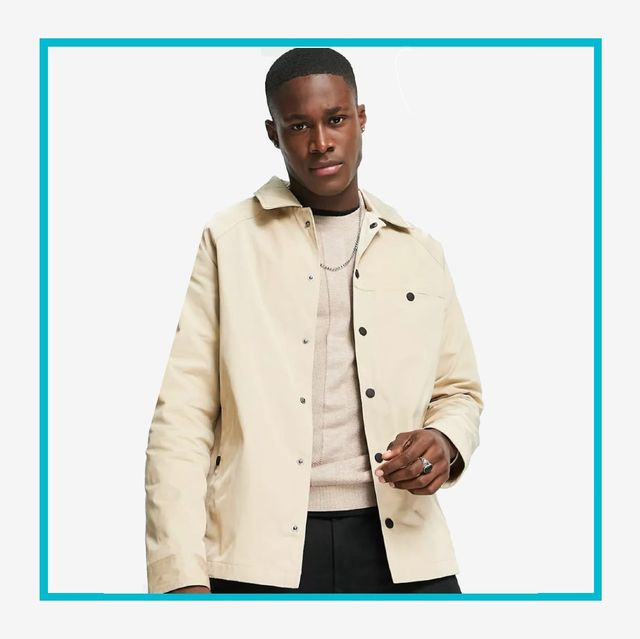How Branded Clothing Uses Fabric to Match Season and Occasion
How Branded Clothing Uses Fabric to Match Season and Occasion
Blog Article
Recognizing Clothes: The Value of Textile Selections in Your Closet
The option of textile in garments plays an essential duty in both visual appeals and functionality. Various materials offer differing levels of convenience, breathability, and durability, directly influencing the user's experience. Understanding these nuances can improve one's wardrobe substantially. Yet, numerous overlook exactly how these options can influence not simply personal style, but also sustainability. What fabric choices could redefine your closet and straighten it with both style and duty?
The Duty of Fabric in vogue and Capability

Common Fabric Types and Their Characteristics
When selecting apparel, understanding the characteristics of typical textile kinds is vital for making educated selections. Cotton, a widely-used natural fiber, is recognized for its breathability, softness, and convenience, making it suitable for informal wear and everyday garments. Linen, an additional all-natural alternative, flaunts superb moisture-wicking residential or commercial properties and a distinctive appearance, perfect for warm climates.Wool, usually favored for its heat and durability, differs in excellence; merino woollen is soft versus the skin, while coarser types are used for outerwear. Artificial fabrics like polyester and nylon offer resilience and resistance to creases, making them popular for activewear and traveling garments. Lastly, blends, which incorporate natural and artificial fibers, can boost functionality while preserving convenience. By recognizing these material features, people can choose garments that aligns with their way of living and visual choices.
Breathability and Comfort: Selecting the Right Fabrics for Different Environments
Picking the ideal fabrics for various environments can significantly enhance comfort and total wearability. Breathable products are vital in warm climates, as they allow air flow and dampness evaporation. Fabrics such as cotton, linen, and moisture-wicking synthetics effectively attract sweat away from the body, keeping the user cool and dry. Conversely, in cooler climates, thicker fabrics like wool or fleece supply insulation while maintaining breathability, making sure warmth without overheating.Additionally, the choice of textile weight plays a vital function; lightweight fabrics are preferable for summer, whereas heavier alternatives are matched for wintertime wear. Comprehending the unique residential properties of each textile makes it possible for individuals to clothe suitably for varying weather problems. Ultimately, picking comfortable and breathable textiles customized to particular environments can substantially enhance daily comfort and improve the general experience of wearing clothing.
Toughness and Treatment: Just How Material Influences Long Life of Your Wardrobe
Choosing the best products can substantially influence the longevity and treatment requirements of a closet. Fabrics such as cotton and polyester are recognized for their durability and simplicity of upkeep, making them ideal for day-to-day wear. On the other hand, delicate products like silk and shoelace call for more cautious handling and specialized cleansing approaches, which can raise the time and initiative needed for care. Branded Clothing.Durability is also affected by the textile's weave and finish; tightly woven fabrics have a tendency to resist damage better than loosely woven alternatives. In addition, artificial blends frequently provide boosted resilience, incorporating the very best high qualities of numerous fibers.Understanding the care directions for every textile is essential, as inappropriate cleaning or drying can bring about early wear. Ultimately, choosing sturdy materials can bring about a longer-lasting closet, minimizing the regularity of substitutes and adding to an extra lasting fashion option
The Impact of Fabric on Fit and Silhouette

Lasting Textile Selections: Making Eco-Friendly Choices
The effect of material expands past fit and shape to incorporate ecological aspects, triggering a growing rate of interest in lasting textile selections. Green materials, such as organic cotton, hemp, and Tencel, are obtaining traction among consumers that prioritize sustainability in their wardrobes. These products are often created with less chemicals and water, reducing their ecological footprint.Additionally, recycled materials, made from post-consumer waste, offer an innovative solution to the textile market's air pollution problem. Brands increasingly accept openness in their sourcing techniques, allowing customers to make educated decisions regarding their purchases.Choosing sustainable textiles not just supports moral practices however likewise motivates the apparel industry to embrace even more responsible production techniques. As recognition of ecological concerns increases, individuals are urged to mirror on the long-term effect of their textile choices, promoting an activity in the direction of read this a much more environmentally conscious and sustainable method to fashion.
Raising Style: Exactly How Fabric Can Change an Outfit
While several might concentrate on shade and cut when picking an attire, the option of fabric plays a crucial function in elevating design and improving total look. Different materials communicate distinct moods and messages; for instance, silk exhibits luxury and class, while denim provides a casual, unwinded ambiance. The appearance and drape of a material can considerably change the shape, with organized textiles supplying a refined look and softer ones developing a more fluid, loosened up aesthetic.Moreover, the weight of the fabric affects wearability throughout seasons. Light-weight textiles like linen and cotton are perfect for summer, while larger materials such as wool and velvet offer heat and style in cooler months. Understanding fabric homes, such as breathability and stretch, also equips people to make enlightened selections that boost comfort without compromising design. Ultimately, the right fabric can transform an attire from common to amazing, making it an important consideration in any closet.
Often Asked Inquiries
How Do I Identify the Material Web Content of My Apparel?
To determine material web content, one can check out treatment labels, conduct shed examinations for fiber recognition, or seek advice from fabric examples. These methods aid set apart products, guaranteeing educated selections for clothes treatment and upkeep in daily official source wear.
Can Textile Option Affect My Mood or Self-confidence?
Material option can greatly impact an individual's mood and confidence. Branded Clothing. Particular products might evoke feelings of convenience or sophistication, while others can feel unflattering or limiting, eventually affecting self-perception and psychological wellness throughout the day
What Fabrics Are Ideal for Delicate Skin?
For people with delicate skin, all-natural textiles like cotton, bed linen, and bamboo are commonly advised. These products are breathable, hypoallergenic, and much less most likely to trigger irritation, making them appropriate selections for convenience and skin health.
Exactly how Do I Appropriately Wash and Take Care Of Different Fabrics?
To correctly care and wash for various fabrics, one must think about each product's certain needs, consisting of temperature level setups, detergents, and drying out methods, making sure durability and maintaining the material's initial top qualities for suitable usage.
Are There Details Fabrics for Athletic or Efficiency Wear?
Sports or performance wear usually makes use of fabrics such as spandex, nylon, and polyester. These materials are designed for moisture-wicking, breathability, and versatility, improving movement and comfort throughout physical activities while supplying durability and support. Alternatively, in cooler climates, thicker materials like wool or fleece supply insulation while preserving breathability, ensuring heat without overheating.Additionally, the selection of textile weight plays an essential role; light-weight textiles are better for summer, whereas heavier alternatives are fit for wintertime wear. In comparison, fragile materials like silk and lace need more mindful handling and specialized cleaning methods, which can increase the time and initiative needed for care.Durability is additionally influenced by the fabric's weave and surface; firmly woven textiles tend to withstand wear and tear much better than loosely woven choices. In comparison, inflexible materials can restrict motion but provide a traditional, polished look.Moreover, the thickness and appearance of the material can influence the visual understanding of body shape. The impact of pop over to this site material expands past fit and silhouette to incorporate ecological variables, prompting a growing passion in lasting textile selections. The texture and drape of a material can drastically alter the shape, with organized fabrics offering a refined look and softer ones creating a much more fluid, relaxed aesthetic.Moreover, the weight of the textile affects wearability across periods.
Report this page